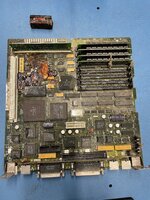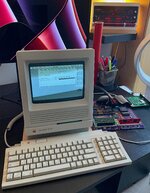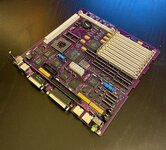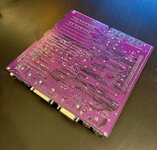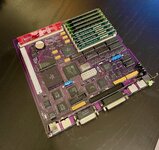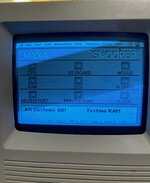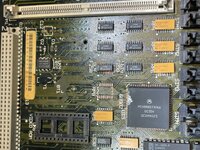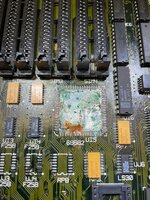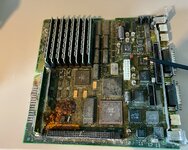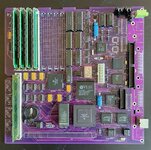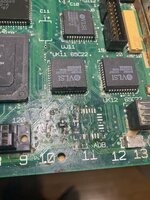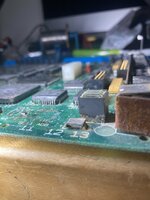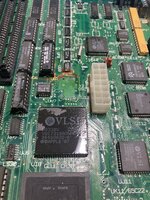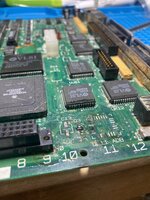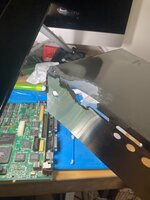Hi all,
I just wanted to share a few photos of my completed SE/30 rebuild which is now working perfectly thanks to Bolle and a number of others in the vintage Macintosh community. Now I just need to figure out what to use it for!
I've included a photo of the original board which was very badly battery-bombed. I did start repairs on it and probably repaired 50% of the broken traces and vias (that I knew about...) before I decided it was a lost cause. Even if I had been successful in getting it "working", it was very unlikely to ever be reliable again due to partially corroded vias. I had previous experience of a less badly bombed SE/30 and although I did get it working again, except for an annoying problem with the serial ports, it took a lot of work!
Anyway, without further ado, here are the pics including one of a minor PCB trace fix required on the Rev02 board to swap two serial signal wires over. This is fixed in Rev03 onwards.
Since I took the photos I have fitted 128MB of RAM but this will be split between two machines once I get the second one built. I expect 64MB is more than enough for anything other than showing off the full 128MB! Snooper also went on to run nearly 300 cycles without any sub-system failures so looking pretty good. I'd love to get a grayscale card fitted so will be watching that project very closely. I also have an ethernet card which I need to test out as it was damaged a bit by the original battery leakage.
Anyway, I hope this helps to inspire anyone thinking of taking on a refurb and please feel free to ask any questions.
Craig.
ps. Mods, I couldn't decide if this post belonged in this forum or the hardware forum so please feel free to move it if I chose wrongly.
I just wanted to share a few photos of my completed SE/30 rebuild which is now working perfectly thanks to Bolle and a number of others in the vintage Macintosh community. Now I just need to figure out what to use it for!
I've included a photo of the original board which was very badly battery-bombed. I did start repairs on it and probably repaired 50% of the broken traces and vias (that I knew about...) before I decided it was a lost cause. Even if I had been successful in getting it "working", it was very unlikely to ever be reliable again due to partially corroded vias. I had previous experience of a less badly bombed SE/30 and although I did get it working again, except for an annoying problem with the serial ports, it took a lot of work!
Anyway, without further ado, here are the pics including one of a minor PCB trace fix required on the Rev02 board to swap two serial signal wires over. This is fixed in Rev03 onwards.
Since I took the photos I have fitted 128MB of RAM but this will be split between two machines once I get the second one built. I expect 64MB is more than enough for anything other than showing off the full 128MB! Snooper also went on to run nearly 300 cycles without any sub-system failures so looking pretty good. I'd love to get a grayscale card fitted so will be watching that project very closely. I also have an ethernet card which I need to test out as it was damaged a bit by the original battery leakage.
Anyway, I hope this helps to inspire anyone thinking of taking on a refurb and please feel free to ask any questions.
Craig.
ps. Mods, I couldn't decide if this post belonged in this forum or the hardware forum so please feel free to move it if I chose wrongly.

